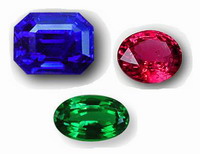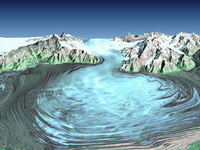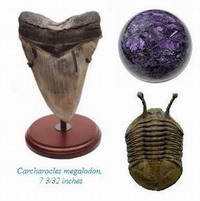Login form
Environment
Fossils
 Wading in chilly water under a seaside cliff, you spot an odd piece of rock. You chip away at it before the ocean tide comes in. When you get it home, you discover that you have found the remains of an animal that no longer exists, a long-necked reptile with flippers that lived in prehistoric seas.
Wading in chilly water under a seaside cliff, you spot an odd piece of rock. You chip away at it before the ocean tide comes in. When you get it home, you discover that you have found the remains of an animal that no longer exists, a long-necked reptile with flippers that lived in prehistoric seas.
Mary Anning probably had a day like this in the early 1800s. Mary was one of the greatest fossil hunters of all time. She found Plesiosaurus, Ichthyosaurus, and many other fossils. She sold them to scientists to help support her family. Scientists in the early 1800s were just beginning to learn what fossils are and why they are important.
Gems

There is a gem called a birthstone for every month of the year. A birthstone is a symbol of the month when you were born. Do you know what your birthstone is?
WHAT DO GEMS LOOK LIKE?
Gems come in different colors. Diamonds are clear. Rubies are red. Emeralds are green. Sapphires are blue.
Glaciers
 Imagine a river of ice so powerful it could grind down mountains, carve out valleys and lakebeds, and spit giant icebergs into the sea. The world is actually full of them! They’re called glaciers, and they’re found on every continent on Earth except Australia.
Imagine a river of ice so powerful it could grind down mountains, carve out valleys and lakebeds, and spit giant icebergs into the sea. The world is actually full of them! They’re called glaciers, and they’re found on every continent on Earth except Australia.
Glaciers may look like big, motionless blocks of ice and snow, but they’re always on the move. Glaciers are responsible for making the world look the way it does today.
Geologic Time

HOW DO YOU COUNT GEOLOGIC TIME?
Geologists (scientists who study Earth) have special names for periods of time on Earth. They name stages in the history of Earth just as you name stages in the life of a person.
Lakes
 You can have lots of fun at a lake. Many people take vacations along lakes. You can go swimming and jump off a raft. You can go out on a boat. You can catch fish.
You can have lots of fun at a lake. Many people take vacations along lakes. You can go swimming and jump off a raft. You can go out on a boat. You can catch fish.
Some lakes are huge. They look as big as an ocean. You cannot see across the largest lakes.
WHAT MAKES A LAKE A LAKE?
Big lakes and small lakes are like bowls in the ground filled with water. Lakes are not part of the ocean. Lakes are called inland bodies of water.
